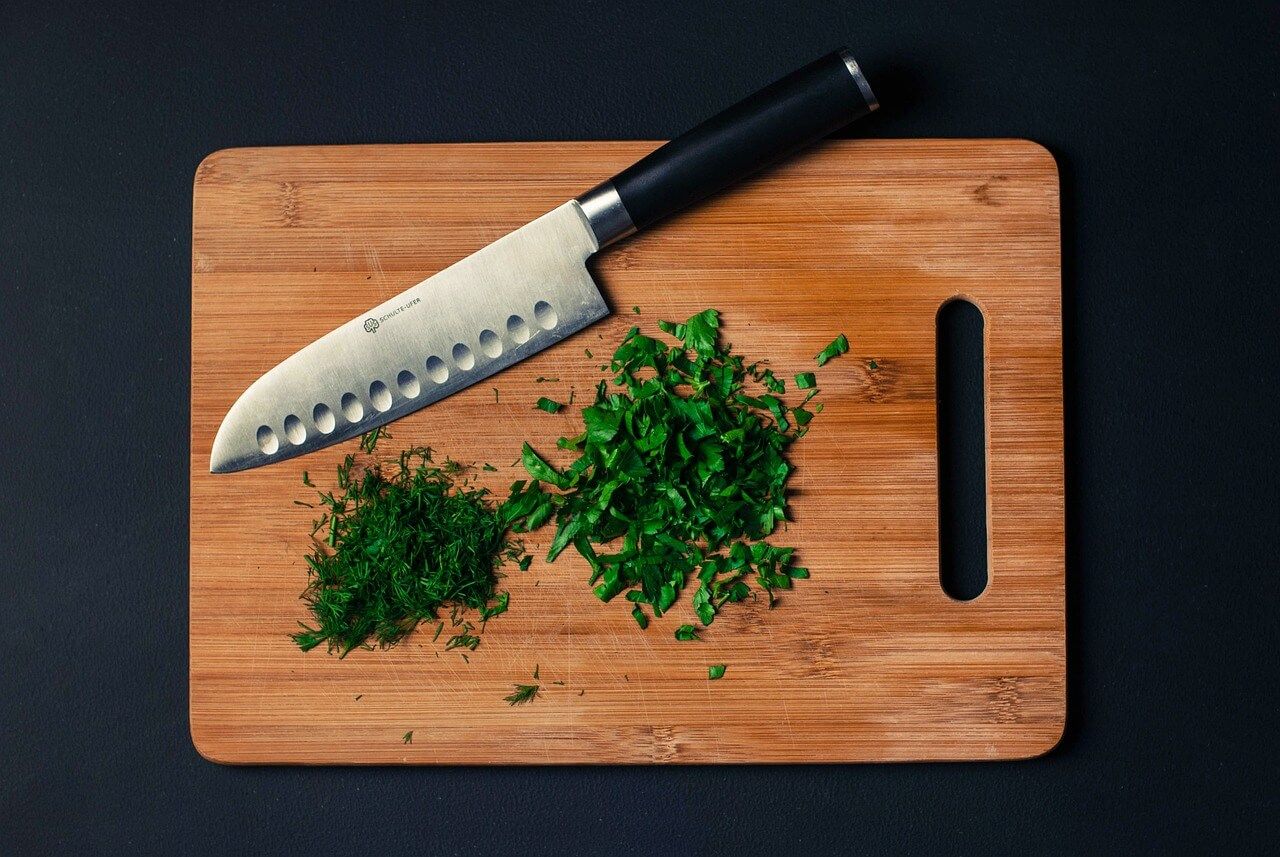Knives are the backbone of any kitchen; among them, the Chef's Knife and Santoku stand out as titans. Both have their unique strengths, but how do they truly compare?
In This Article
- History and Origin
- Design and Performance
- Materials and Craftsmanship
- Usage and Techniques
- Santoku vs. Chef's Knife: A Detailed Comparison
- Frequently Asked Questions
History and Origin
With its European lineage, the Chef's Knife has been a cornerstone in Western kitchens for centuries. Its design is versatile, catering to a myriad of tasks.
Conversely, the Santoku, hailing from Japan, is a more recent addition to global kitchens, emphasizing precision and efficiency.
Design and Performance
Santoku Knives:
- Edge: Straight, designed for precision.
- Blade: Narrow sheep's foot design.
- Special Feature: Often has a Granton edge to prevent food from sticking.
Chef's Knives:
- Edge: Curved, suitable for a rocking motion.
- Design: Robust, catering to a variety of tasks.
- Variations: Differences in blade curvature and weight, especially between French and German designs.
Materials and Craftsmanship
Knives are as much about artistry as they are about functionality. The materials used and the craftsmanship involved play a pivotal role in determining the knife's performance, longevity, and aesthetic appeal.
Santoku:
- Steel Type: Traditional Santoku knives are crafted using harder Japanese stainless steel, such as VG-10 or SG2. This harder steel allows for a sharper edge, but it also means the blade can be more brittle.
- Craftsmanship: Japanese knife-making is an art passed down through generations. The meticulous forging and sharpening processes ensure a blade that's sharp and balanced.
- Finish: Many Santoku knives feature a hammered finish, known as 'Tsuchime,' which creates air pockets to prevent food from sticking to the blade.
Chef's Knife:
- Steel Type: Chef's knives in the West are often made from softer stainless steel, which is more durable and resistant to chipping. Some high-end versions might use carbon steel, which can hold an incredibly sharp edge but is prone to rust if not cared for properly.
- Craftsmanship: Western knife-making prioritizes durability and versatility. The blades are often thicker and heftier, designed to handle a wide range of tasks in the kitchen.
- Alternative Materials: Some modern Chef's knives are crafted from ceramic, which is incredibly sharp and resistant to rust. However, ceramic blades can be brittle and may chip if dropped.
Usage and Techniques
The design of a knife inherently dictates its optimal usage. The differences in blade shape, edge, and weight between the Santoku and Chef's Knife lead to variations in cutting techniques and applications.
Santoku:
- Cutting Motion: The flatter edge of the Santoku is designed for a straightforward up-and-down chopping motion. There's minimal rocking, ensuring precise cuts.
- Applications: The Santoku shines when it comes to slicing, dicing, and mincing. Its design is particularly apt for crafting thin vegetable slices or sashimi.
Chef's Knife:
- Cutting Motion: The curved blade of the Chef's Knife facilitates a rocking motion, allowing for efficient and continuous cutting.
- Applications: The Chef's Knife is a jack-of-all-trades. Whether chopping vegetables, mincing herbs, slicing meat, or even deboning a chicken, this knife has got you covered.
Santoku vs. Chef's Knife: A Detailed Comparison
While both the Santoku and Chef's Knife are versatile and essential tools in the kitchen, they have distinct characteristics that set them apart:
Blade Shape & Cutting Motion:
- Santoku: Features a flatter edge and a more squared tip. This design is ideal for a straightforward up-and-down chopping motion. It excels in precision tasks, such as finely slicing vegetables or fish.
- Chef's Knife: A more curved blade facilitates a rocking motion for cutting. This makes it versatile for a range of tasks, from mincing herbs to slicing meat.
Blade Length:
- Santoku: Typically shorter, ranging from 5 to 7 inches. This shorter length offers more control and precision, especially for delicate tasks.
- Chef's Knife: Generally longer, with common sizes ranging from 8 to 10 inches. The added length provides leverage, making it suitable for bulkier ingredients and larger cutting tasks.
Edge Grind:
- Santoku: Often features a thinner blade with a sharper angle, which is excellent for precise, clean cuts. Some traditional Santoku knives have a single bevel (sharpened on one side), while others have a double bevel.
- Chef's Knife: Typically has a double bevel, with both sides of the blade sharpened. This design offers versatility and is more familiar to Western users.
Weight & Balance:
- Santoku: Generally lighter and well-balanced, making it easy to maneuver. The lightweight nature is beneficial for tasks that require precision.
- Chef's Knife: Tends to be heftier, providing more weight for tasks like deboning or cutting through thicker ingredients.
Versatility:
- Santoku: While versatile, it shines in tasks that require finesse and precision, such as thinly slicing vegetables or crafting sushi rolls.
- Chef's Knife: A true all-rounder in the kitchen, capable of handling various tasks from chopping to dicing to mincing.
In essence, the choice between a Santoku and a Chef's Knife boils down to personal preference, the specific tasks at hand, and one's comfort level with each knife's design and functionality.
Frequently Asked Questions
Which knife is better for beginners?
Due to its lightweight design, the Santoku is often recommended for those just starting out.
How do I maintain my knife's sharpness?
Regular honing and occasional sharpening with a whetstone are key.
Can the Santoku handle meat?
Absolutely. While it shines with vegetables, it's versatile enough for meat.
Further Reading
- Santoku Knife Insights: Distinctive Design & Features: Explore the unique design elements and features of the Santoku knife, understanding its prominence in the world of kitchen tools.
- For those passionate about the Santoku knife and eager to delve deeper, explore our guide to finding the best Santoku knife.
- Master the art of using a Santoku with the comprehensive article "How to Use a Santoku - Knife Skills 101" curated by Knifewear.



